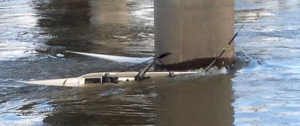During the last week of April and the first week of May, two separate rowing accidents were reported to have hospitalized scholastic rowers in New York and Connecticut.*
If you want to learn more about these accidents, the first place to look ought to be the USRowing website, but nothing about these accidents has appeared there. In fact, it’s hard to find any statistics or case studies on rowing accidents on the website. Apparently, USRowing maintains a policy of not collecting accident or injury information.
When I first became interested in USRowing’s safety programs, Willie Black set up a conference call with several members of the Safety Committee to discuss the cold water/pfd issues I had raised. I had expected that the committee would justify its policies with data I was unfamiliar with and arguments I hadn’t considered, so I was surprised when I learned that they collected no accident or injury data. Why? Without data, how do they formulate safety policy or guidelines?
Collecting accident data isn’t inherently complicated or expensive. For starters, USRowing might ask for it. Using a simple accident reporting form like the one on RowSafeUSA, they could ask coaches for basic information about accidents in which rowers need to be rescued, treated for hypothermia, or hospitalized, or in which boats receive more than a specified amount of monetary damage.
If they wanted to be more forceful about collecting the information, they could make club participation in regattas contingent upon a signed statement affirming that such information is collected by the club and will be or has been submitted to USRowing. A signed waiver of liability is already required for participation, so a second signed affirmation would be consistent with this policy that is already in place. It would necessarily be an honor system, of course, but there isn’t any reason to believe rowers aren’t honest, is there?
Assuming that the information was collected, it could be argued that there would be expenses incurred in collection, storage, and analysis of the data. Given the entry costs of rowing – boats, oars, unis, racing jackets, etc, and club fees – it’s hard to believe that collection and storage fees would be significant, but if anyone wants to offer a quantitative estimate of what the costs might be it would be interesting.
The analysis of data, of course, is another matter. That could be very expensive, depending on how it is done. Or, it could be cost-free. Perhaps USRowing could ask for volunteers to serve on a data-analysis subcommittee of the Safety Committee. Or perhaps an interested rower could undertake a meta-analysis. Rowers have certainly undertaken lots of other detailed technical analyses of the sport, so it’s certainly possible that some rowers would look closely at the information if a data-base were available. In fact, if the data were available, it’s hard to believe rowers wouldn’t analyze it.
RowSafeUSA doesn’t have the ability to collect or analyze accident data, but USRowing does. And it should.
———————————————————————————————————-
*Note, this picture is not from either of these two accidents, but from a crash of the Oregon State University men’s varsity as reported in the Corvallis Gazette-Times, March 04, 2014 7:30 pm.
>>> Originally May 10, 2015 <<<

